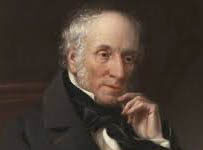The Tudor Period: A Comprehensive Overview

The Tudor Period: A Comprehensive Overview
Introduction
The Tudor period, spanning from 1485 to 1603, was a transformative era in English history characterized by significant political, social, and religious changes. The Tudor dynasty, which included notable monarchs like Henry VII, Henry VIII, Edward VI, Mary I, and Elizabeth I, left an indelible mark on the country.
The Rise of the Tudors
Henry VII
The Tudor dynasty began with Henry VII’s victory at the Battle of Bosworth in 1485, marking the end of the Wars of the Roses. His reign ushered in a period of relative stability after years of civil strife.
Consolidation of Power
Henry VII strengthened the monarchy by centralizing power, and establishing the Court of Star Chamber to ensure royal authority. His financial policies, such as the prudent management of finances, laid the foundation for future Tudor prosperity.
Henry VIII and the Reformation
Henry VIII’s Reign
Henry VIII, known for his six marriages, succeeded his father in 1509. His reign is synonymous with the English Reformation, a pivotal period in which England broke away from the Roman Catholic Church.
Dissolution of Monasteries
One of Henry’s notable actions was the dissolution of monasteries between 1536 and 1541, resulting in the seizure of their wealth and property. This move had far-reaching consequences for the religious and social fabric of England.
Religious Turmoil
Edward VI
Following Henry VIII’s death, his young son Edward VI ascended to the throne. Edward’s short reign from 1547 to 1553 witnessed the implementation of Protestant reforms, significantly impacting the religious landscape.
Mary I
Mary I, the daughter of Henry VIII and Catherine of Aragon, became queen in 1553. Her reign aimed to restore Catholicism, leading to the persecution of Protestants. The period is known as the Marian Persecutions.
Elizabethan England
Elizabeth I
The Tudor period reached its zenith during the reign of Elizabeth I (1558-1603). Often referred to as the Elizabethan era, it was marked by a flourishing of arts, exploration, and political stability.
Elizabethan Religious Settlement
Elizabeth I navigated the religious tensions by establishing the Elizabethan Religious Settlement in 1559. It sought to find a middle ground, allowing a mix of Catholic and Protestant practices within the Church of England.
Social and Cultural Developments
Renaissance Influence
The Tudor period witnessed the influence of the Renaissance, with a renewed focus on art, literature, and education. This cultural resurgence laid the groundwork for the later Elizabethan cultural flourishing.
Exploration and Trade
Exploration, led by figures like Sir Walter Raleigh and Sir Francis Drake, expanded England’s trade routes and economic influence. The era saw the beginnings of England’s overseas empire.
Conclusion
In conclusion, the Tudor period was a time of immense change and transformation in England. The dynasty’s impact, from Henry VII’s consolidation of power to Elizabeth I’s Golden Age, shaped the nation’s trajectory and laid the groundwork for the subsequent developments in British history. 0 0 0.
The Tudor Period A Comprehensive Overview
N.B. The article ‘The Tudor Period A Comprehensive Overview’ originally belongs to the book entitled ‘Essays on Shakespeare and His Time‘ by Menonim Menonimus.
You May Like:
- Reviews on Shakespeare’s Works
- Shakespeare’s Sister-An Analytical Study
- The Globe Theatre
Additional Searches:










